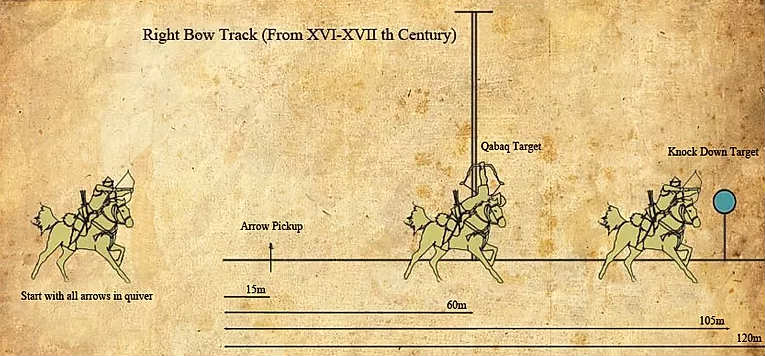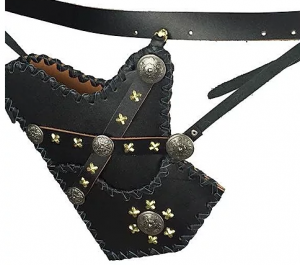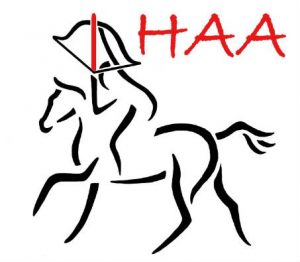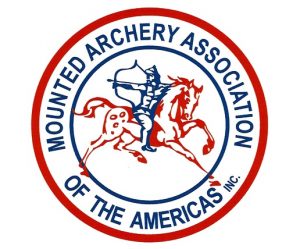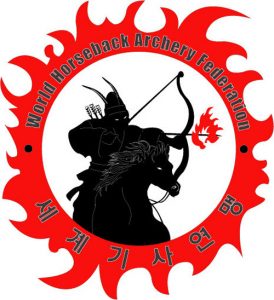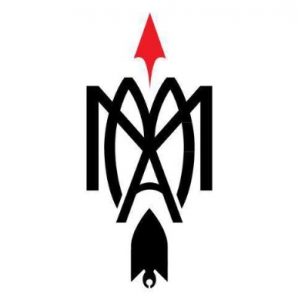Mounted Archery for Beginners
Mounted Archery for Beginners
This article gives guidance in mounted archery for beginners. The popularity and recognition of mounted archery as a modern sport has increased and is on the rise all over the world. It is an exciting time to get involved in an activity that combines traditional archery with equestrian skills, as well as connecting us to our past.
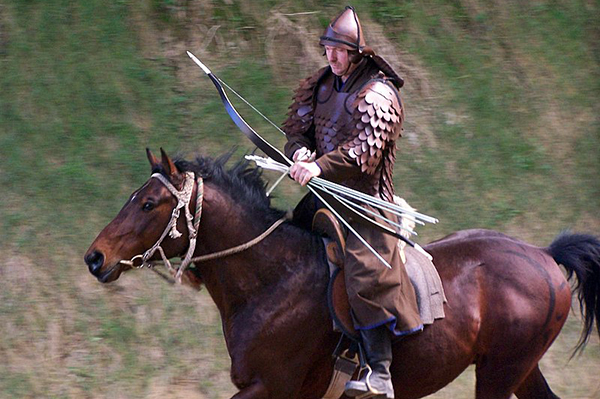
A History
Mounted archery is nothing new. Reliefs from ancient Assyria depict mounted archers dating back to the 9th century B.C. The mounted archer is the archetypal warrior of the Steppe nomad. The vast expanses of the Eurasian steppe are where mounted archery has its deep roots. The first people to effectively deploy mounted archers on a large scale were the Scythians. History would repeat itself as wave upon wave of migratory, nomads of the horse and bow, would come crashing into their sedentary neighbors. The Parthians, Huns, Magyars, Turks, Mongols and several other nations would all use the same mounted archery tactics in warfare for many centuries, right up until the proliferation of firearms in the 15th century A.D.
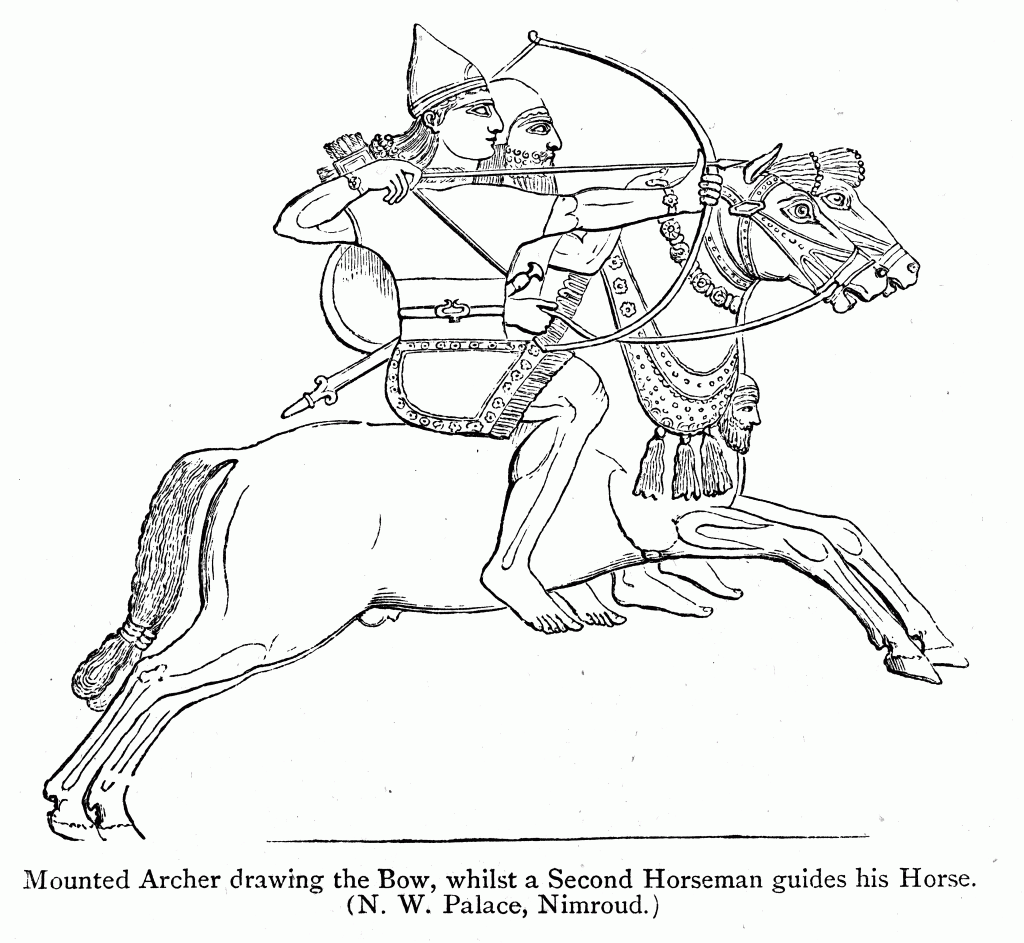
The combination of an effective long-range weapon and the rapid mobility of being on horseback, allowed ancient nomads to dominate the battlefields. The equestrian skills and archery prowess developed by the nomads came from their way of life on the harsh steppes. The Huns, for example, were known to begin their training with horses and various weapons before they could even walk. The historian Jordanes writes that the Huns lived most of their lives in the saddle. They ate, drank, traded and even slept while mounted.
Horseback archers or mounted archers were typically considered light cavalry. Sacrificing heavy armor for maneuverability and speed was considered essential. Heavy cavalry, with substantially more armor, also used the bow, especially by the Mongols of the 13th and 14th century A.D.

East Asia, being in contact with Steppe nomads, also has mounted archery well represented in their histories. China, Korea, and Japan widely used mounted archers. In fact, the Samurai, although well romanticized as swordsmen, were first and foremost mounted archers.
Decline
The effectiveness of mounted archers and cavalry, in general, had declined sharply after firearms reached Europe in the 15th century A.D. After about two thousand years of development and widespread practice, armies of marauding nomads, mounted and showering their enemies with arrows, would no longer be seen on the plains of Eurasia. Although no longer considered an effective military strategy, mounted archery has returned! With a desire to get back in touch with our ancestors and with nature, mounted archery is quickly becoming a recognized sporting event.
Equipment
There are a few obvious essentials required in mounted archery for beginners and experts alike. The first item to consider is a bow. A composite recurve or reflex bow was used by all mounted archers of the past. These bows are relatively short when compared to infantry bows, but because of their design, they can store tremendous power for a relatively short draw length. In the past, most horsebows were short to allow for easy maneuvering while mounted. The Japanese yumi is somewhat of an exception, however, the lower limb is much shorter than the upper one which allows for less interference from the back and head of the horse.
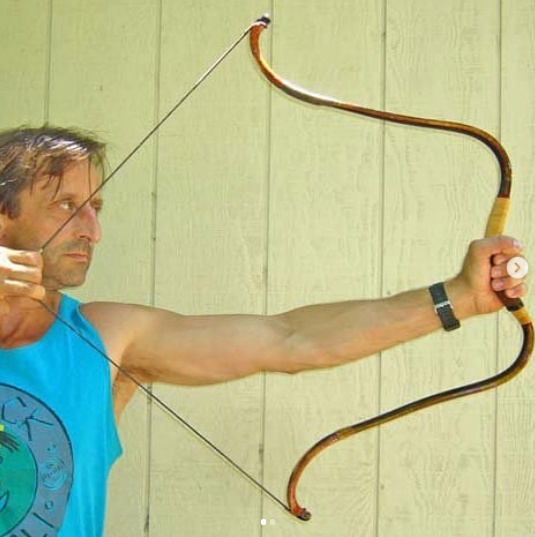
Draw Length
An archer’s optimal draw length is determined by his or her own anatomy and will vary widely between individuals. Typically a taller person will have longer arms and can, therefore, accommodate a longer draw. A common measurement technique is to hold your arms out to either side, parallel with the ground. Then measure from tip of one’s middle finger to the other middle finger. Take this number (in inches) and divide by 2.5. This would give you a good starting point. There is a degree of individual preference and this will take some trial and error on your part. Some prefer a shorter or longer draw.
Draw Weight
An archer will be able to draw a slightly lighter bow while mounted than on foot. The stabilizing effects of the leg muscles are somewhat negated while in the saddle. However, the use of stirrups does help in reintroducing the legs in assisting with the draw. These days, most will not be engaged in mounted archery as a means of military conquest so heavy bows, approaching 100 pounds will not be necessary. The speed at which one can release and reload arrows, as well as accuracy, is more important in the sport of mounted archery. Bows with a draw weight range of 30 to 50 pounds are most common. If you are a true beginner to archery, a bow that is 30 to 40 pounds is a good starting point. As strength and confidence develop, heavier bows can be used.
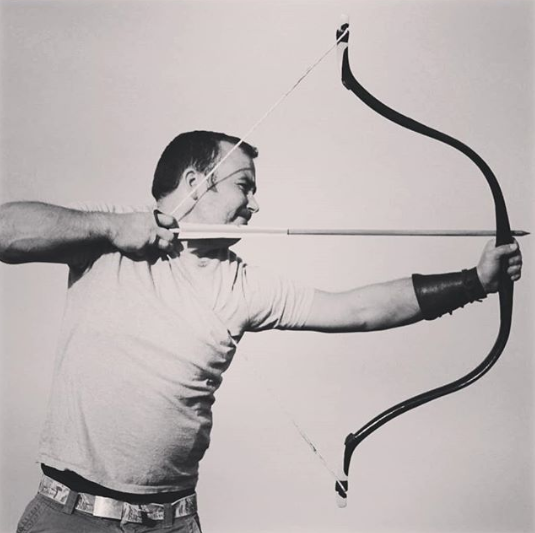
Arrows
Most modern mounted archers choose carbon fiber or aluminum arrows with a spine of 5-600 grains and field tips with weighing around 80 grams. Feather fletching is required as arrows with veins will not suffice for a traditional horsebow. Flu fletching and rubber or other soft heads are usually required for the Qabac track. A common arrow length is approximately 28-30 inches. A good article for mounted archery for beginners pertaining to arrows is the Wikipedia entry: https://en.wikipedia.org/wiki/Arrow
Release protection
Both a Mediterranean draw and thumb release are can be used in mounted archery. The Kassai school teaches a Mediterranean draw while most other styles use a thumb draw. Turkish, Mongolian, Korean styles all utilize a thumb draw and release. It is recommended that you practice both! The author prefers a thumb draw but it is entirely up to the individual. Some sort of finger protection is usually used for either style of release. A glove covering the three fingers for a Western or Mediterranean draw or a thumb ring is the most common. A thumb ring rests over the covers the thumb and helps protect the digit from the strain that comes with repeated shooting.
Quivers
While the Kassai style has the archer hold several arrows in the bow hand, most other mounted archery techniques involve drawing the arrows from a quiver. Historically, and when utilizing a thumb draw, the quiver is kept on the right side of the archer for a right-handed shooter. Because a thumb release has the arrow shot from the right side of the bow (assuming right-handed archer), the archer can quickly load consecutive arrows with his draw hand. Here are some links for some well made and historical quivers used in mounted archery.
Manchu Quiver by Alibow
https://www.alibowshop.com/product-page/horse-archer-quiver-manchu
Ottoman Quivers by The Flying Hun
https://squareup.com/store/the-flying-hun/
Horses
Horses were the prized possessions of the Steppe nomads. The ancient Magyars (Hungarians), Huns, and Mongols used horses for transportation, milk, food, warfare, and a medium of exchange. The wealth of a person could be roughly determined by how many horses they possessed. A typical Steppe warrior would bring several while on a campaign. The warrior would switch horses often to ensure that they would not tire and that a fresh mount was available to keep the fight going if necessary. Most individuals interested in mounted archery will not have access to horses. However, there are several mounted archery clubs around the world where one can access trained horses. For those that do have access to a horse, some mounted archery specific training is required to get the horse used to have someone shoot arrows while seated on their backs.
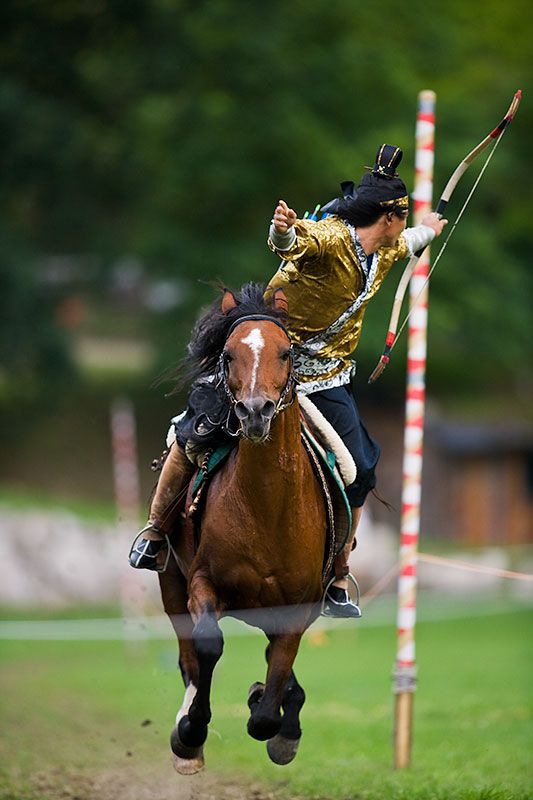
Archery Clubs, Lessons, Clinics
Because of the growing popularity and participation in the sport of mounted archery, several organizations and clubs arose the help facilitate training, tournaments, competitions and other various mounted archery and archery related events. These are some good resources to get you started with mounted archery for beginners:
The International Horseback Archery Alliance
https://www.horsebackarchery.info/
Mounted Archery Association of the Americas
https://www.mountedarchery.org/
World Horse Archery Federation
AMM Archery (Poland)
Canadian Federation of Mounted Archery
https://canadianfederationofmountedarchery.ca
Kassai Lajos Website (Mounted Archery Hungary)
https://www.lovasijaszat.hu/en
Types of Mounted Archery Tracks/Courses
There are several varied tracks in mounted archery competitions. New tracks and courses are being devised all the time. Each has its own unique character and an experienced competitor would be able to perform well in all. A good source for many tracks can be viewed at a course database at horsebackarchery.info Some of the most popular tracks in competitions include:
The Korean Tracks:
The Korean tracks consist of targets at varying distances and each track varies in its overall distance. For example, this is a diagram of a Korean track known as K2-3-5. It is called such because of the number of targets on 3 separate tracks. Each competitor gets 2 attempts on each track, adding up to a total of six runs. Detailed rules for Korean tracks are listed at horsebackarchery.info.
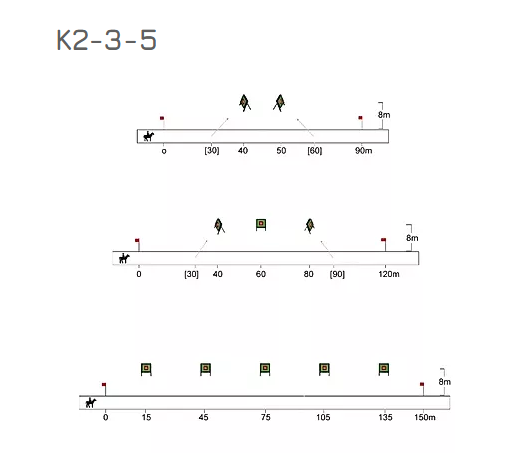
The Hungarian Tracks:
The Hungarian tracks are very similar to the Korean track with three targets (middle track in the above image). Here are some diagrams of the Hungarian 90-meter track. For more information on these tracks visite https://www.horsebackarchery.info/hungarian-tracks

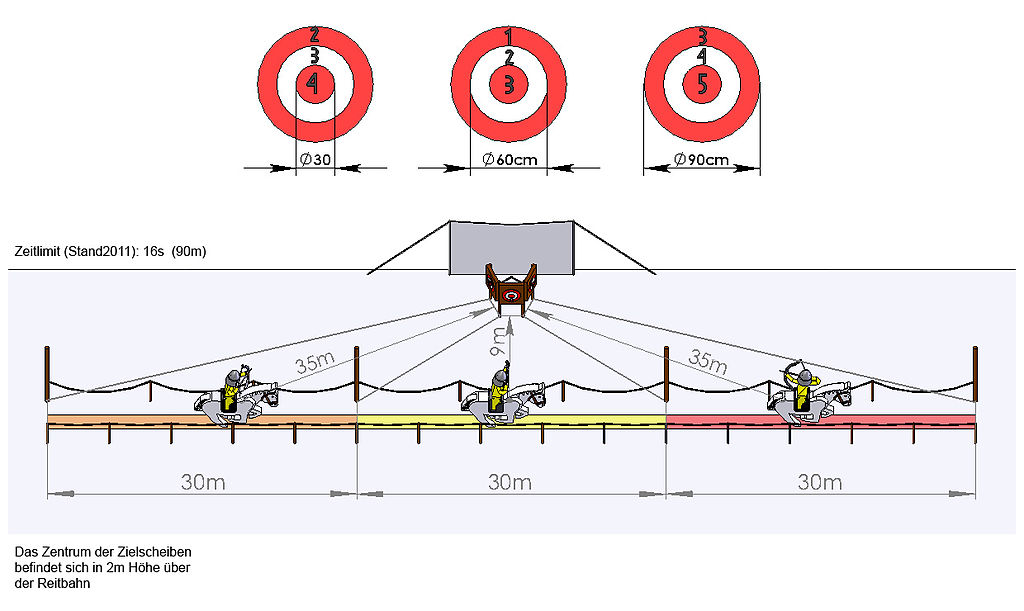
The Qabac
Qabac is an interesting style which is Turkish in origin. A target is placed on a pole (7-9 meters high) The archer rides underneath and past this target and attempts to hit it from beneath.
